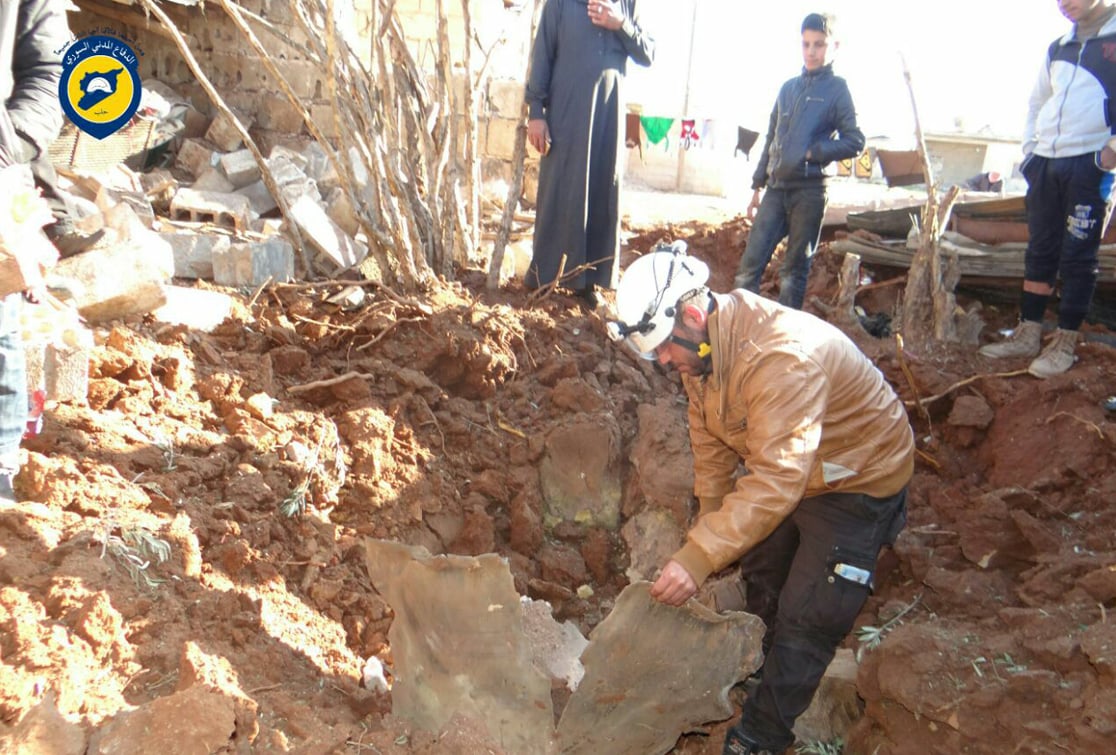Ceasefire Agreement Had no Effect on Barrel Bombs

I. Introduction
On December 30, 2016, a comprehensive ceasefire was announced in Syria under a Russian-Turkish sponsorship. The parties signing to the statement – the Syrian regime, on one hand, and armed opposition factions, on the other hand, pledged to cease all combat operations including aerial airstrikes, and cease all raids and advancements on the ground. However, military ISIS-held areas (Self-proclaimed the Islamic State) were excluded from the agreement. Nevertheless, the Syrian regime didn’t stop targeting wide areas with barrel bombs over the past month, despite the agreement.
Vitaly Churkin, the Russian representative to the United Nations, said that the Syrian regime has stopped using barrel bombs. However, the daily monitoring and documentation conducted by SNHR prove, beyond any doubt, otherwise as the Syrian regime continues to kill and destroy Syria by dropping hundreds of barrel bombs. In this report, we are going to highlight the incidents in which we documented the use of barrel bombs particularly with place, date, and pictures. This report is a monthly report by SNHR.
Being a distinctively indiscriminate weapon with huge destructive impact, the barrel bomb doesn’t only kill civilians but also terrorizes and displaces residents in light of the destruction it creates. Dropping barrel bombs from warplanes in this savage and primitive manner amounts to a war crime. Every barrel bomb dropped is considered a war crime.
According to SNHR’s violations archive, the first notable use of barrel bombs by Syrian regime forces (Army, security, local militias, Shiite foreign militias) was on Monday, February 1, 2012 against the residents of Salqein city in Idlib governorate. Barrel bombs is a locally-made weapon which is used by Syrian regime forces due to the fact that it costs notably less than missiles and it has a huge destructive impact. The use of barrel bombs is based on the principle of free fall and it weighs sometimes more than one-fourth ton and it is a distinctively indiscriminate weapon. even if barrel bombs killed an armed man, this would be an accident as 99% of the victims killed by barrel bombs are civilians and the percentage of women and children victims varies between 12% to 35% in some cases.
Security Council adopted Resolution 2139 on February 22, 2016 which specifically condemns the use of barrel bombs: “cease all attacks against civilians, as well as the indiscriminate employment of weapons in populated areas, including shelling and aerial bombardment, such as the use of barrel bombs.” Nonetheless, Syrian regime forces are still dropping tens of barrel bombs on armed opposition-held areas.
In some cases, we documented the use of barrel bombs that is loaded with poison gases by Syrian regime forces which is a violation of Security Council Resolution 2118, adopted on September 27, 2013, and Resolution 2209, adopted on March 6, 2015.
This report monitors the number of barrel bombs that were dropped across Syria, the death toll it causes, and the destruction of most notable vital facilities caused by barrel bombs. In light of the difficulties our teams encounter, it should be noted that this the bare minimum of the actual magnitude of crimes.
The only party that possesses warplanes and helicopters is the ruling regime. However, the regime denies that it is using barrel bombs the same way it denies perpetrating other violations such as murder, arrest, enforced-disappearance, and torture among others. In contrast, the regime denies the International Independent Commission of Inquiry on the Syrian Arab Republic access to Syria, and bans local and international human rights organizations and independent media. Therefore, this report doesn’t include the remaining three parties (Self-management forces, extremist Islamic groups, and armed opposition factions) as none of them has as an air force.


